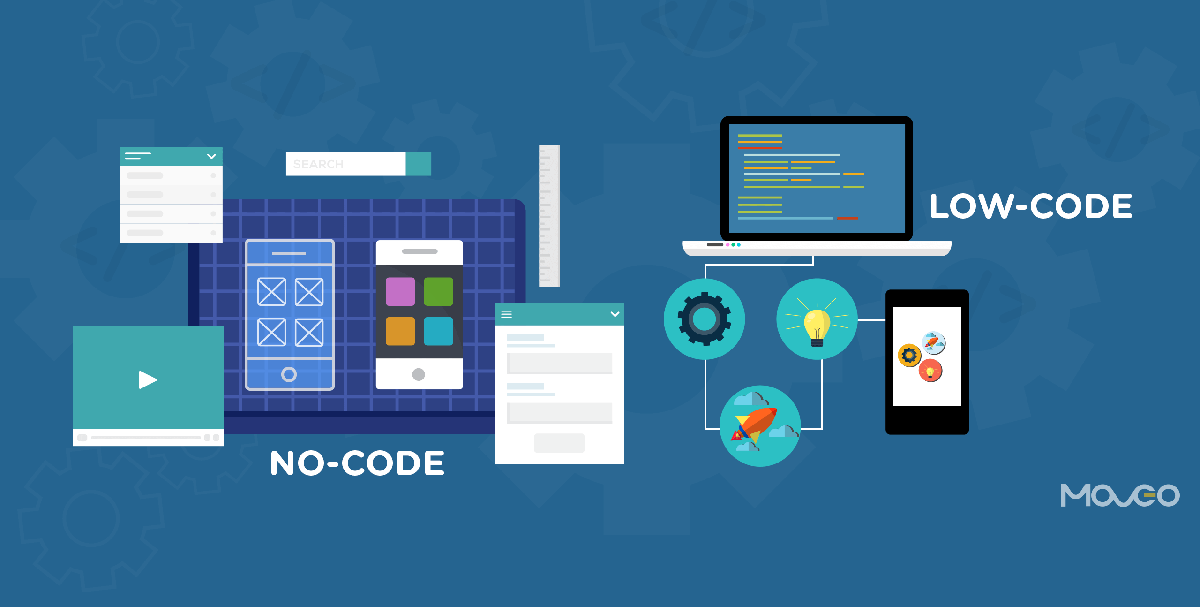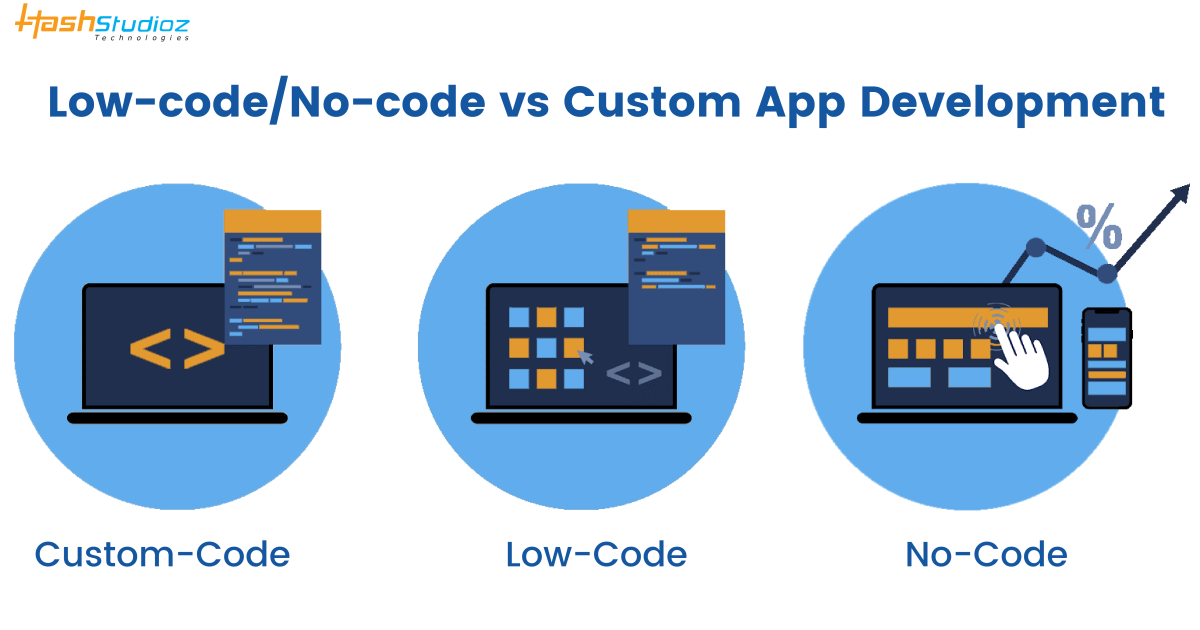Great Reasons On Deciding On Legacy application modernization with Low-code
Great Reasons On Deciding On Legacy application modernization with Low-code
Blog Article
Advantages Of Low Code Application Development In Terms Of Integration Capabilities
Integration of low-code applications offers a variety of advantages, such as the capability to seamlessly integrate different platforms and services. These are the main benefits of pre-built connectors, APIs, as well as other tools:
A Wide Variety of Connectors Low-code platforms generally come with a vast library of connectors that are pre-built for popular enterprise software (e.g. ERP, CRM, databases, cloud services). It simplifies the integration with these systems.
API Integration - A lot of low-code platforms have built-in API integration, allowing developers easy access to other data sources or external services.
Simple to use:
Integrations with Drag-and-Drop: Integrations can be implemented with drag and drop interfaces. Developers and non-developers can do this without having to write lengthy code.
Visual Workflow Builders: Visual tools for designing workflows and data flow aid in understanding and establishing integrations more intuitively.
Standardized Integration Methods:
SOAP and Restful Services: Using standard web service protocols like SOAP and REST makes it simple to integrate with other systems and applications.
OData Standards and Other Standards Support for standards, like OData, allows the easy access of data and its manipulation across various platforms and applications.
Real-Time Data Synchronization:
Real-Time Integrations: Low code platforms can handle the real-time synchronization between data systems, applications and databases. This will ensure that all data is current and consistent throughout an organization.
Event-Driven Architecture: A few platforms support event-driven architectures, permitting applications to respond to events in real time, which is crucial for interactive and dynamic applications.
Legacy System Integration:
Low-code platforms provide many tools to connect with existing systems. They enable organizations to modernize IT without re-designing their current systems.
Data Migration: Built-in tools help transfer data from older applications to new ones that are built on platforms that have low-code.
Third-Party Integration of Services:
Cloud Services Integration: Easy scaling and deployment of apps is possible with seamless integration of cloud services like AWS, Azure and Google Cloud.
Business Application Integration: Low-code platforms have the ability to integrate with various business applications like Salesforce, SAP, Microsoft Dynamics and more. This allows for a seamless workflow across different business processes.
Simplified Data Management:
Unified Data Models: A few lowcode platforms offer common coding models, which make it easier to manage managing data and integration, as well as synchronization across different systems.
Data Connectors Pre-configured data connectors make it easy to access and manipulate data from a variety of sources.
Security and Compliance
Low-code platforms make sure that integrations comply with security standards and protocols, protecting data in the process of transport and in its rest.
These platforms are typically equipped with features that ensure conformity (e.g. HIPAA, GDPR) and give assurance to companies handling sensitive information.
Extensibility:
Custom Codes and Scripts. For more complicated requirements in integration, low-code platform often allows the inclusion custom scripts and code. This provides flexibility without compromising user convenience.
Plug-in Ecosystem : An ecosystem of extensions and plugins allows integration to be enhanced by allowing users to easily implement new functions as they are needed.
The overall low-code platform's capabilities to integrate can be a very effective tool to create interconnected applications that are scalable and efficient. They facilitate the process of connecting disparate system, improve data flow, and permit enterprises to embrace innovative technologies while also leveraging existing ones. Have a look at the best her response for Low-code Platform for application development for more recommendations including low code development platforms, application modernization software, cross platform mobile development, application development platforms, application development platforms, software for app development, jdbc server, application modernisation, multiplatform mobile app development, app platforms and more.
Advantages Of Low-Code Application Development In Terms Of Scalability And Flexibility
Low-code development of applications offers a variety of advantages when it comes to the ability to scale and flexibility. These are vital to build applications that can adapt to business demands and adapt to changing requirements. Here are a few of the main benefits: Rapid scaling:
Cloud-based deployment: Many low-code applications are cloud-based that allow applications to scale effortlessly with the cloud infrastructure. Businesses can manage the increased workloads without having be concerned about managing servers.
Auto-Scaling Features - Built-in automatic scaling features automatically adjust resources in accordance with the requirements. This provides continuous performance, even during peak periods without any manual intervention.
Flexible Architecture:
Modular Design: Low code platforms encourage the modular design of applications, allowing components to be independently designed and tested, as well as scalable. Modularity increases flexibility and facilitates updates or expansions of specific components without affecting the entire system.
Microservices Architecture: The Microservices architecture supports the creation of applications by creating a loosely coupled set of services. This allows for greater the flexibility and scalability.
Customizable solutions:
Extensibility: Low-code platforms generally allow for custom scripting and coding, which lets developers expand the functionality of applications beyond what is available in the box. This allows businesses to satisfy their specific requirements.
Third-Party Integrations: Integration with third-party APIs and services allows businesses to add additional functionality to their software.
Agile Development and Deployment
Continuous Deployment and Delivery Low code platforms support agile methods, enabling continuous deployment and integration (CI/CD). This allows applications to be upgraded and upgraded swiftly, in response with user feedback.
Iterative development low-code development is an iterative process, which means applications can be scaled and enhanced in a gradual manner. This decreases the risk of large-scale changes while allowing a controlled growth.
Resource Optimization
Effective Resource Management: Low-code platforms assist maximize the use of resources by offering instruments for monitoring and controlling application performance. This helps ensure that resources are efficiently used and are able to be scaled up or down according to actual needs.
Load Balancing : The integrated load balancing feature distributes workloads equally among servers. This improves the system's ability to handle large volumes of traffic and also ensures constant performance.
Global Reach
Multi-Region Implementation: Low-code platforms can be deployed across many geographical regions. This allows businesses to provide users with low latency access worldwide. This is crucial for applications that cater to users from all over the world.
Localization Support The built-in support for language localization allows applications to be easily adapted for different languages and regional needs and thereby allowing them to be more flexible in various markets.
Maintenance and updates
Simple Maintenance : Low-code programs are modular and visual. This simplify maintenance tasks. This allows bugs and updates to be made quickly, with no lengthy downtime.
Version Control Systems that integrate versions control can assist you in managing updates, rollbacks and changes. They assure that the changes can be released safely and previous version can be restored when necessary.
Cost Efficiency:
Low-code platforms cut down on development costs because they eliminate the requirement for extensive programming. They can also allow you to expand applications without proportional cost or effort.
Pay-As.-You-Go A lot of lowcode platforms have flexible pricing models, including pay-as.-you-go. They align prices with usage and growth, allowing financial flexibility.
The ability to scale low-code applications lets businesses develop strong flexible, scalable, adaptable and durable applications. These platforms permit quick adaption to evolving requirements and efficient use of resources and continuous advancement. This ensures that applications can grow with the business. View the top rated top article for Legacy application modernization with Low-code for website examples including application development platforms, app platforms, app modernization, no code platforms, low code platforms, paas service, push alerts, cross platform mobile development, application modernization, jdbc server and more.
In Terms Of Vendor Support And Community Involvement, Low-Code Development Offers Many Benefits.
Low-code platform development has many advantages, such as support from vendors and a community support. This is essential in ensuring successful application development as well as ongoing maintenance and constant improvement. These are the major benefits: Support
Comprehensive Technical Support:
Support Team with Dedicated Staff: Many low code platforms have dedicated support personnel who can assist with technical queries or troubleshooting issues, as well as providing advice. They can make sure that issues are resolved promptly.
Help is accessible 24/7. Many vendors provide around-the-clock assistance, which can be particularly useful for businesses that operate in different time zones.
Training and Onboarding
Vendors typically offer user-friendly programs including tutorials or webinars. They can also offer certificates.
Personalized Onboarding: A lot of vendors provide personalized onboarding to assist new customers implement the platform in a way that is effective and customize it to their particular requirements.
Regular Updates and enhancements:
Continuous Improvement Lowcode platform providers typically issue regular updates that include new features, performance improvements as well as security patches. This helps to ensure that the platform is current and secure.
Feedback integration: Vendors will often incorporate user feedback into their process of development to ensure that the platform is able to meet the changing needs of the users.
Comprehensive Documentation:
Detailed Documentation: Extensive and well-organized documentation is typically available that covers everything from basics to advanced customization, which allows users to solve problems on their own.
API References: API documentation is detailed and assists developers in integrating APIs with other platforms and to further adapt their apps.
Consulting and Professional Services
Expert Consulting: Vendors often offer consulting services to assist with planning for strategic purposes as well as design of architecture and complex implementations, ensuring that users have the ability to leverage the platform to its maximum potential.
Custom Development Services A few companies offer custom development services in order to build specific integrations and features that are not included in standard.
Community Support
Active User Communities:
Discussion boards and forums: Many platforms with low-code feature a vibrant community for users to ask for help, share solutions and collaborate in finding the most efficient methods.
User Groups and Meetings Both local and virtual user groups and meetups offer opportunities to learn, network, and share experiences with others.
Collaboration and Knowledge Sharing:
Community-Contributed Resources: Users often share templates, modules, and extensions that they have developed, which can be reused or adapted by others, accelerating development and innovation.
Crowdsourced Problem Solving: The collective wisdom and experience of the crowd can be an invaluable resource for troubleshooting issues and figuring out creative solutions for difficult issues.
Learning and Development
Community-led Training: Many groups hold workshops, sessions for training and webinars. These are usually run by knowledgeable users who offer practical insight and advanced techniques.
Online Tutorials and Courses Community members make and share tutorials, online courses and step-by-step guides. This enhances the educational resources available to users.
Feedback and Influence:
Forums for Product Feedback Community forums offer a variety of channels for providing feedback to vendors, which can help shape the development of features.
Beta Testing Active communities could be able to participate. This lets them gain early access to the platform and be part of the design of the platform.
Recognition and Support
Community Recognition Programs - A lot of vendors have recognition programs that recognize the contributions made by active members of their community such as MVP (Most Valuable Professionals) programs.
Peer Support: Community members offer support to other peers by sharing their experiences and providing guidance. They build a supportive and supportive environment through sharing their expertise.
Overall, the combination a strong vendor's support and a vibrant, active community offer a robust support system for low-code development. It makes sure that users have access to the resources, expertise, as well as collaborative opportunities to successfully develop and launch their applications.